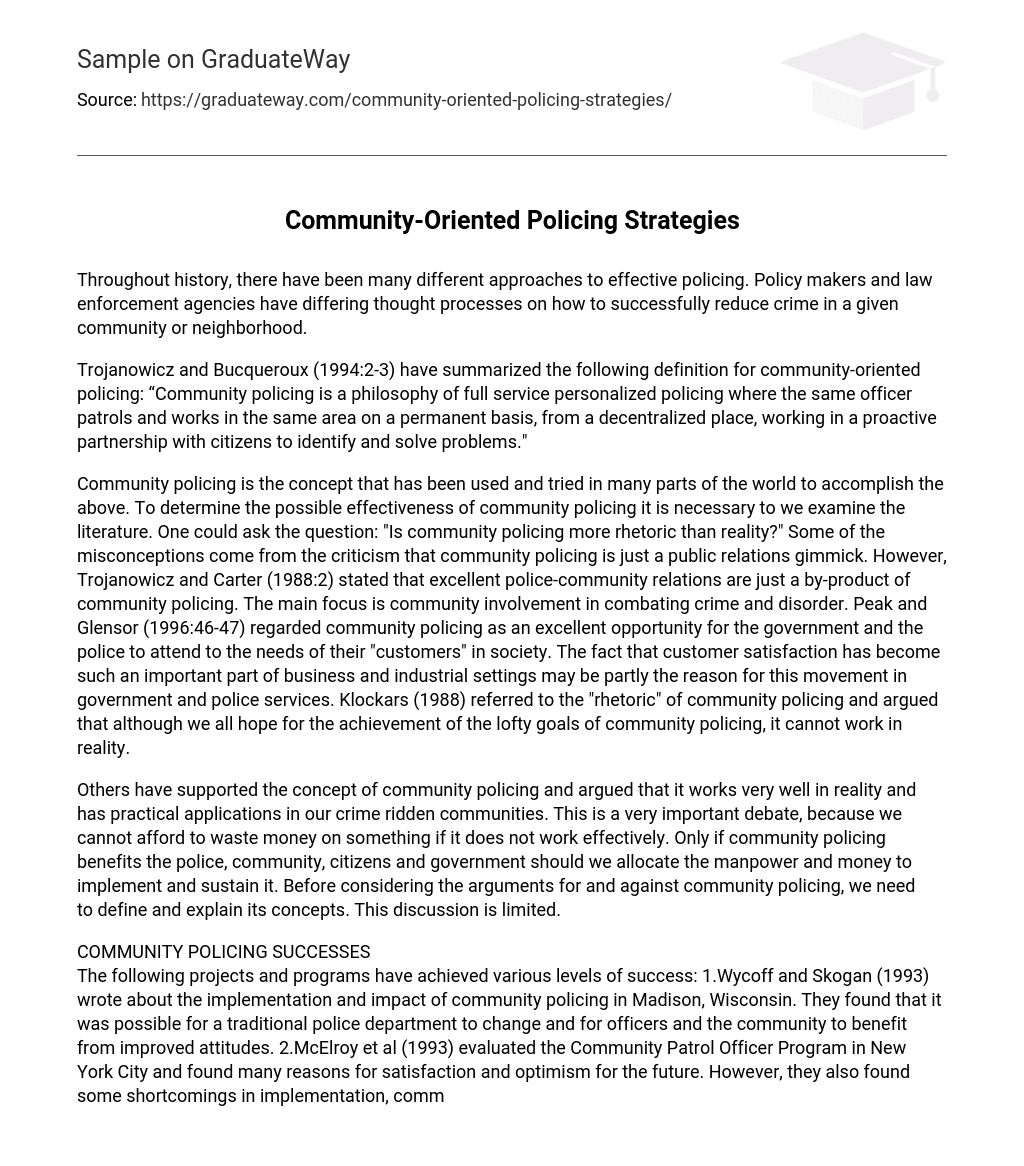Throughout history, there have been many different approaches to effective policing. Policy makers and law enforcement agencies have differing thought processes on how to successfully reduce crime in a given community or neighborhood.
Trojanowicz and Bucqueroux (1994:2-3) have summarized the following definition for community-oriented policing: “Community policing is a philosophy of full service personalized policing where the same officer patrols and works in the same area on a permanent basis, from a decentralized place, working in a proactive partnership with citizens to identify and solve problems.”
Community policing is the concept that has been used and tried in many parts of the world to accomplish the above. To determine the possible effectiveness of community policing it is necessary to we examine the literature. One could ask the question: “Is community policing more rhetoric than reality?” Some of the misconceptions come from the criticism that community policing is just a public relations gimmick. However, Trojanowicz and Carter (1988:2) stated that excellent police-community relations are just a by-product of community policing. The main focus is community involvement in combating crime and disorder. Peak and Glensor (1996:46-47) regarded community policing as an excellent opportunity for the government and the police to attend to the needs of their “customers” in society. The fact that customer satisfaction has become such an important part of business and industrial settings may be partly the reason for this movement in government and police services. Klockars (1988) referred to the “rhetoric” of community policing and argued that although we all hope for the achievement of the lofty goals of community policing, it cannot work in reality.
Others have supported the concept of community policing and argued that it works very well in reality and has practical applications in our crime ridden communities. This is a very important debate, because we cannot afford to waste money on something if it does not work effectively. Only if community policing benefits the police, community, citizens and government should we allocate the manpower and money to implement and sustain it. Before considering the arguments for and against community policing, we need
to define and explain its concepts. This discussion is limited.
COMMUNITY POLICING SUCCESSES
The following projects and programs have achieved various levels of success: 1.Wycoff and Skogan (1993) wrote about the implementation and impact of community policing in Madison, Wisconsin. They found that it was possible for a traditional police department to change and for officers and the community to benefit from improved attitudes. 2.McElroy et al (1993) evaluated the Community Patrol Officer Program in New York City and found many reasons for satisfaction and optimism for the future. However, they also found some shortcomings in implementation, community involvement, and command support.
3.The United States National Institute of Justice (1992) reported the results of the community policing partnership in Seattle, Washington. They claimed success since crime statistics showed a dramatic improvement in the quality of life of citizens.
4.Bayley (1989) evaluated community policing in Singapore and stated that through it operations in Singapore have become more adaptive and rational. He saw it as a “model” that would serve other police organizations well and called it “one of the most far-reaching examples of police reform in the world today” (Bayley, 1989:31).
5.A community policing pilot project that started in 1993 in Chicago as a field test was evaluated after two years. The findings were very encouraging. It was found that perceived crime problems had decreased significantly, robbery and auto theft declined, residents had more positive attitudes towards the police and police supervisors involved in the study were more optimistic than their counterparts about the impact of community policing. (US National Institute of Justice, 1995) 6.Various other related projects and programs were reviewed by Eck and Spelman (1993), Kelling et al (1991), Lavrakas (1986), Pate (1986), Skogan and Wycoff (1986), Trojanowicz (1986), and Yin (1986). Some of these were not full-scale and comprehensive community policing programs and some of them had little or no effect. However, research designs that failed to test the resulting effectiveness have been blamed as problematic in those cases.





